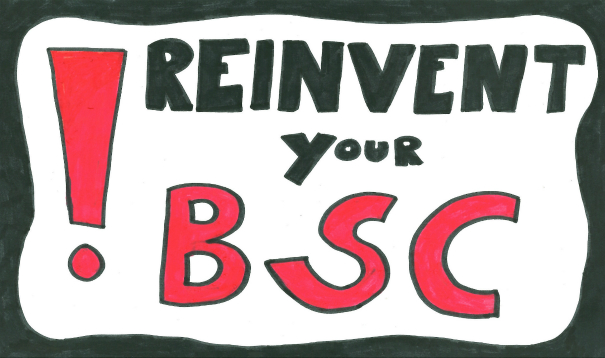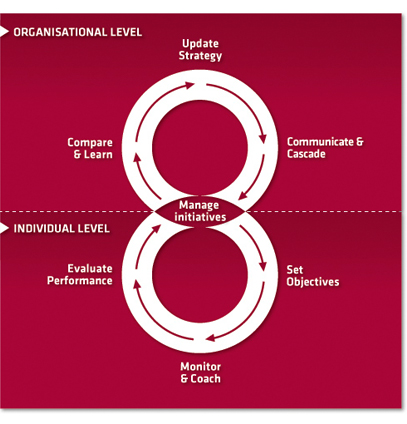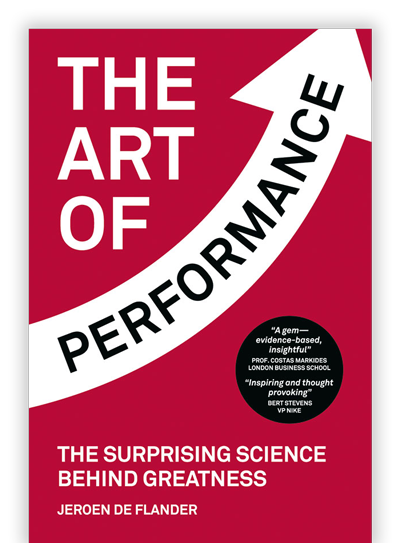The Balanced Scorecard in strategic management – promoted by Kaplan and Norton – is the best approach to cascade your business strategy. The balanced scorecard perspectives help you to get this done.
Here’s a the ultimate Balanced Scorecard guide. Update regularly! [Last update November 2018]
I don’t focus too much on the technical Balanced Scorecard aspects. (Many great books have been written on the subject.)
Instead, I focus on the best possible Balanced Scorecard approach for your business. This guide offers examples, tips, a cool balanced scorecard video and a PPT you can download.
I hope it helps you to find the best approach from all available Balanced Scorecard strategies!
Bonus
Download a free checklist Get a useful Balanced Scorecard checklist to help identify the best tips for you!The Balanced Scorecard – Ultimate Guide 2018
You can read this guide chronologically or jump to any chapter you like:
- What is the Balanced Scorecard: a Definition
- The Balanced Scorecard video [highly recommended]
- Balanced Scorecard theory: the 4 benefits / advantages
- Balanced Scorecard Strategy: 28 tips

What is The Balanced Scorecard? [Balanced Scorecard Definition]
The Balanced Scorecard is “one of most influential management ideas of the past 75 years” according to Harvard Business Review.
The ultimate goal of a Balanced Scorecard is to experience strategy execution as a continuous process.
Today, the Balanced Scorecard provides much more than multi-view measurement. In many organizations, it’s an essential management system. A cornerstone of successful strategy implementation.
According to research by Bain, the balanced scorecard is the sixth most used management instrument in today’s organizations. 50 percent of all 11,000 survey participants making use of it.
What does the Balanced Scorecard do:
1. It provides a framework for translating an abstract strategy into specific, concrete objectives, measures, indicators and actions.
2. It combines a ‘balanced’ (cause/effect) view with a ‘scoring’ (measuring/tracking) view.
3. It focuses on aligning the goals of business units, teams and individual employees with the company’s overall business strategy.
4. A great Balanced Scorecard breaks a business strategy down into specific and measurable chunks.
5. It also keeps the long-term strategic goals visible.
Bonus
Download a free checklist Get a useful Balanced Scorecard checklist to help identify the best tips for you!Balanced Scorecard video
Here’s a great Balanced Scorecard video by Intrafocus.
Note: the Balanced scorecard has been first created by Art Schneiderman and made popular by Prof. Kaplan and Norton.
Balanced Scorecard theory: advantages
I’m an early Scorecard adopter having used it since 1996. I’ve learnt the hard way what works and what doesn’t.
The most important question: you need to decide how you use the BSC in your organization.
Or put differently, a Scorecard can offer your company a variety of benefits depending on how it’s used.
The crucial question is therefore not if you use the Scorecard but how you use it.
For maximum return, you need to look below the surface, understand your options and make a definite choice about ‘how our company should use the Scorecard for maximum benefit’. It’s like buying a smart phone and using it only for phone calls. You’ll miss out on all the other great benefits that such a phone can offer.

Let’s take a closer look at the 4 major benefits a Balanced Scorecard has to offer:
Benefit 1. The Balanced Scorecard cascades your strategy
The Balanced Scorecard helps you cascade strategy. That’s the most important benefit.
Your strategy is your big elephant that you have to cut into pieces. The Balanced Scorecard helps you achieve this.
The cause and effect relationships of Scorecards on different levels force you to make your strategy thinking more visible and facilitates debate and challenging. Have a look at the 8, a simple Strategy Execution Framework.

You will find ‘cascade strategy’ in top right. That’s where the Balanced Scorecard fits in – a methodology to cut your strategy into pieces and cascade it across the organization. The Scorecard is a company’s strategy waterfall. It can either be a torrent such as the powerful Niagara Falls on the Canada-America border or the almost invisible sources that feed Iceland’s hot springs.
Benefit 2. The Balanced Scorecard measures your strategy progress
If you ask 100 managers ‘What’s the use of a Balanced Scorecard?’, 98 will include the response ‘It’s for measurement’ within their answer. And there’s nothing wrong with that, as long as it’s not the only answer. And therein lies the fundamental problem with Scorecards in many organizations.
The Balanced Scorecard can measure, but that’s not the only or most important thing it does or should do. It’s like saying that a flat screen TV is great as a wall decoration or that a car keeps you dry when it’s raining – you just miss out on the most important benefits such as watching your favorite movies and programs in high quality or getting you from A-to-B the most convenient way possible.
There is no doubt that Scorecards improve your measuring, but by focusing on this benefit alone, you will only reap 25 percent of all four potential benefits. I see too many managers getting carried away with the measuring part and when that happens a Scorecard approach does the organization more harm than good.
Companies that lose track of the goal and let the means take over are on the wrong track. The Scorecard becomes a nice word for describing a set of measures, rather than a building block of your Strategy Execution framework.
Read more: KPI – Ultimate Guide – definition,78 examples and KPI template
Benefit 3. The Balanced Scorecard communicates your strategy
Cascading strategy is all about the collective understanding of the overall company strategy. And while this strategy can be designed by just a few people, the Strategy Execution demands effort from a much bigger crowd to succeed.
Thanks to the visualization of the cause and effect relationships, the Scorecard helps to get the strategy into the Head, Heart and Hands of all your employees. A strategy needs to come alive at each of these three levels.
Benefit 4. The Balanced Scorecard boosts your strategic thinking skills
The fourth benefit is a Scorecard advantage that few advertise or promote. And that’s a shame, as I believe it’s one of the most important returns you can have.
I’m a big fan of integrating Balanced Scorecard building into the leadership track. This is especially useful in operational environments where 95 percent of the challenges that managers face are focused on finding short or medium-term solutions. There will come a time when your best managers in operational jobs move up. And they should be ready.
Learning to work with the Balanced Scorecard in a leadership track is a great way to train and get those analytical and conceptual thinking muscles in shape. So the Balanced Scorecard offers the opportunity to build and stretch those strategic thinking skills, an opportunity rarely present in lower-level operational environments.
Balanced Scorecard Strategies: 28 tips
Now that you have a feeling for the potential BSC benefits, let’s move forward and look at the Balanced Scorecard strategies for implementation.
I have tried to go beyond the typical list of tips and provide a fresh perspective.
Scorecard tips: 1 – 10
Tip 1: Don’t rely on the first BSC book
Knowledge evolves and 1996, when the first Kaplan and Norton Scorecard book was launched, is light years ago. If you start a BSC project in your organization and see project members running around with the original Scorecard book complete with highlighted paragraphs, something is very wrong.
The first Balanced Scorecard book is not the reference. New best practices have emerged so start your project with up-to-date knowledge.
Tip 2: Watch out for the Scorecard gurus
Many so-called BSC ‘gurus’ have jumped on the Balanced Scorecard wagon and produced a plethora of books all pretending to be the ‘definitive’ BSC book. Amazon lists more than 4,000 books under Balanced Scorecards. Take some time to dig into the subject. Listen to different opinions, build a broad view and make your own mind up, taking into account the specific needs of your organisation.
Remember, just because something works very well in one company doesn’t mean it will do the same for yours.
Tip 3: Manage the introduction of the Balanced Scorecard as a change project
The Balanced Scorecard impacts the way your managers manage – so the implementation effort will therefore demand change effort from everyone. Increase your success rate dramatically by managing your BSC introduction as a change project, rather than the introduction of an instrument.
Tip 4: Managing change requires strong leadership
There is no change without strong leadership. It’s that simple.
Tip 5: Communicate process before content
Don’t wait until the content ready. Start right away. Communicate the Balanced Scorecard advantages, the project timing, roles,… Proactive, no-nonsense communication creates buy-in from the start. Need inspiration? Take a look at communication best-practices in change projects. They’re quite useful.
Tip 6: Know what you want to achieve
A Balanced Scorecard can serve many purposes. You won’t be able to reap all of them in the first year. So choose carefully. Once you make a choice, stick to it. Make sure you get those benefits before focusing on something else. I like to focus on the cascading and learning part first, on the communication second, moving onto the measuring part last.
Tip 7: Define your cascading architecture
It’s important to select a cascading approach upfront. You have several options to cascade objectives, KPI’s, targets and initiatives. Your choice depends on your overall goal.
For example:
- region or country will help you to empower a geographical approach
- business lines will help you achieve higher autonomy and accountability for your profit centers
- themes, like innovation, customer experience or CSR (green economy), will help you improve topic coordination
Tip 8: Avoid the classic pitfalls
Many companies have gone through the process of introducing the Balanced Scorecard. It’s a good idea to do some research. Get a feeling for the situation in your organization. This helps to avoid classic pitfalls. Typical mistakes are:
- Senior management is not convinced and shows little commitment
- The Scorecards are developed by ‘the happy few’
- The internal/external project members have limited or only theoretical knowledge
- The Balanced Scorecard is only used by top management
- The Balanced Scorecard stays too long at the development stage before being launched and used
- There are not enough links to the strategy and planning processes
- The content of the Balanced Scorecard is unrealistic
- The Balanced Scorecard is only used for remuneration purposes
Tip 9: Get your vocabulary straight
An objective is neither a KPI nor a target. A short overview of the key words and what they mean helps to avoid confusion. Choose the words that fit your organization. And make sure people stick to them.
And do make sure you know them as well! 🙂
Tip 10: What’s the aim?
Your goal is not to get into the Balanced Scorecard hall of fame. Your goal is to cascade strategy to maximum effect. If that works with a dull approach that the Scorecard community doesn’t find sexy, that’s too bad. Your goal is to get the strategy into the heads, hearts and hands of the people in your organization. Not to stroke your ego.
Scorecard tips: 11 – 20
Tip 11: Set the expectations right from the start
Be honest with your stakeholders about timing and results. Setting up the basics may take a few weeks. But seeing real benefits will take far longer. Don’t oversell yourself. Make your stakeholders aware upfront that implementing a Balanced Scorecard is a transformational journey better approached as a marathon. Not a sprint.
Tip 12: Adapt your size
The BSC should be adapted to the size of the user group. You don’t need a cannon to kill a fly. Smaller units don’t have the resources to handle a complex Scorecard.
If you use Scorecards for large and small units, you need three different approaches: a bare version for the smaller units, a standard version for mid-sized teams and a full-size version for big units. If you don’t, you will overshoot for the smaller units and create frustration.
Tip 13: The BSC is not the end station… so don’t stop!
Strategy Execution is a continuous process. The Scorecard is one technique for cascading strategy to the next level. But cascading strategy to the next level down is just the first step in the cascading process. If you stop there, your strategy will never end up in all the hands, hearts and heads of your employees.
Make sure you continue to translate the Scorecard output to a solid project and programme portfolio and that you succeed in getting the necessary actions and activities into the individual objectives of all team members.
Tip 14: Start with the right content
A well-designed Balanced Scorecard reflects your company’s strategy − so make sure your strategy is clear at the start. If it isn’t, take the necessary time to clarify. The quality of the strategy cascade can only be as good as the quality of the strategy it starts from. Challenge your strategy for inconsistencies and loopholes.
Tip 15: Don’t let your budget process dictate your company’s future
What is the most important process in an organization? Based on the amount of attention it receives, I would say the budgeting process. In many organizations, budget is king.
However, many companies would make a big leap forwards if the strategy cascade process received the same attention.
Ideally, the cascading process should lead. And the budget process follow. A solid strategy cascading process with the BSC is a great counterbalance for an out-of-control budget approach.
“If companies would invest as much time in their strategy cascade as they do in their budgeting process, most would perform a lot better”
Tip 16: ‘We have a strategy map’ is not the same as ‘We have a strategy’
When I see a strategy map, my favorite question is “Where’s the strategy?”. Just because you have a strategy map, doesn’t mean that you have a strategy. A strategy map often looks fancy but mostly it’s a lot of ‘map’ and very little ‘strategy’. I like a written strategy document in Word format with all the hypotheses clearly explained. I like a document where there is no hiding behind an arrow and people saying ‘But that’s what that arrows means’ when you point out something that isn’t clear.
I’m not against strategy maps at all. In fact, they can be quite useful to communicate strategy and create involvement. But I’ve seen too many sexy PowerPoint presentations that look strategic from a distance, but are far from strategic if you take a closer look and start questioning the content. So be careful!

Tip 17: Create a strong core team that involves others
Take your time selecting the people who will support the Scorecard’s implementation. Make sure you have people with a good level of business understanding, excellent facilitation skills and the ability to mobilize people. Motivate the core team to involve as many people as possible. Use workshops to ensure enough buy-in. Critical mass is key to propel a transformation forward.
Tip 18: Cascade more than objectives
The cascading process provides a great opportunity to align the whole organization towards the strategy. Cascading your KPI’s and your initiatives will help you improve alignment.
Alignment can happen vertically – between ‘parent’ and ‘child’ organizational units. And horizontally – between ‘sister’ organizational units.
Tip 19: Don’t rely too much on external consultants
Cascading strategy is a learning process. Don’t miss the opportunity to capture all the knowledge that’s generated during BSC implementation by over-utilizing external resources.
Appoint your (best) internal resources to the implementation team. Especially future leaders you like to develop.
The BSC implementation program offers a unique window of opportunity to understand the essentials of your business and contribute to its future performance.
Tip 20: Strategy communication is much more than a good-looking PowerPoint presentation on the intranet
You communication does not end when the slides are put on the shared drive. This is just the beginning. When you are tired of the message, you have only reached three percent of your target population.
Scorecard tips 21 – 28
Tip 21: Develop a ‘strategy story’
How many times do you hear two managers tell a slightly different strategy story? But using the same slides.
If your strategy is not detailed, others will fill in the blanks using their imagination. In other words, if your strategy is vague, it will not survive the scorecard cascade. So the end result may look good on paper, but there will be a variety of messages running through your organization depending on the messenger.
If you want your strategy to survive the balanced scorecard cascade, you have to do 3 things:
- Detail the strategy and develop the ‘official story‘
- Work on the communication skills of the messenger. Teach your managers to repeat the storyline until everyone feels comfortable with the strategy story.
- Make the strategy tangible for each group
Read more: 51+ tips to improve your public speaking skills!
Tip 22: Your CEO on YouTube
One of my favorite ways to achieve message consistency message is a strategy video. Make an 3 to 10-minute video of the CEO giving a strategy message that can be shown in sessions. I prefer an interview format as most people don’t like speaking directly to the camera. You discuss the questions upfront and edit to perfection (I use a frozen image between each question allowing for easy cutting and pasting).
Here’s a video example where I explain strategy:
Tip 23: Use your Scorecard beyond those boring meetings
Don’t limit the use of your Scorecard exclusively to Scorecard-related meetings. We have seen managers walking around with their Balanced Scorecards in pocket version. Or posters on the walls. Here’s an example of such a poster using content from one of my keynote sessions. Your content will be different by you get the idea. [PS: if you want this strategy execution poster, drop me an email]

Tip 24: Demystify the words ‘strategy’ and ‘innovation’
In many organizations, these two words carry an aura of complexity and mystery. Lots of people like to use them. Even cultivate them. But most don’t really know what they are talking about.
One of the best ways to help others (and maybe yourself) is by clarifying ‘what is strategy’. Here’s a short article about the core of strategy to help you.
I promise, no fluffy words 🙂
Read more: 7 things every leader should know about strategy
Tip 25: Teach people how to debate strategy
Operational people are like fire fighters – they are always ready to react at a moment’s notice. But reacting to something that has already happened demands a different skill-set than debating things that have not happened. If you are not used to doing this, it can be quite a challenge.
- One of the first things I learned at Arthur D. Little is scenario thinking. This is thinking about the future by looking at the same problem with a different set of fixed parameters each time. (it sounds harder than it is. The key question is ‘Let’s assume that…’).
- A second important skill – and an often-overlooked one – is active listening. As you are talking about something that has not yet happened, you have to feed the basis of your discussion on the assumptions of others. Listening skills are highly undervalued. Interventions such as ‘So you’re saying that…’ or ‘Do I understand correctly that…’ are crucial to get a solid strategy debate off the ground. Remember: the quality of a strategy debate is greatly depends on the listening skills of the participants. When you are not able to feed off other’s ideas, the discussion becomes a ‘convincing’ contest. And flatters nothing but the ego.
Tip 26: Integrate strategy thinking into your leadership development program
I’m a strong believer that every leader (or potential leader) should get the opportunity to learn about strategy concepts.
I’m always surprised that most leadership programs fail to integrate strategy modules to challenge their leaders.
I advocate that each leadership track should have a strategy track. And not only for the most senior people.
An MBA is not the solution. Yes, an MBA will teach you strategy (if it’s a good program), but you will never be able to send every leader. As a result, you create an atmosphere of ‘strategy is for the elite’.
Tip 27: Balanced Scorecard walk-in sessions
A Scorecard is based on a number of assumptions.
- The better the assumptions, the better the quality.
- And the more assumptions are challenged, the better they get.
Do you have a systematic process in your organization to do this?
Not everyone has the most conceptual boss in the world with time on his/her hands.
Not everyone is willing to show that they struggle with certain parts of their thinking.
So how can you solve that?
I’m a big fan of Balanced Scorecard walk-in sessions. How do they work? During the Scorecard season – the period during the year when everyone is cascading the overall strategy to their working environment – you set up a room where individuals or small teams can go to debate the Balanced Scorecard. Show what they have done and get challenged. It shouldn’t take long. Between 30 and 60 minutes.
The short discussion can change assumptions and really help people step up their BSC game.
Tip 28: Identify conceptual thinking power
A few years ago I participated in a research program.
The goal: identify which and to what extent leadership competencies could be developed.
The conclusion: out of a set of 24 leadership competencies, conceptual thinking is the most difficult to develop.
So what do you do when you know that conceptual thinking power is hard to develop? You need to start as early as possible in the career to trigger conceptual power. If you start the development process when people actually need the skills in their job (after a promotion to senior level, for example), you will be too late.
Remember: if a senior team does not have enough conceptual thinking power, it will get into trouble. Many companies try to solve this by getting strategy consultants in. But if the team is unable to challenge the concepts/assumptions they propose, you won’t win.
Want to learn more?
Balanced Scorecard PDF
Implementing a solid Balanced Scorecard approach is company specific. To help you customize these tips, I have designed a powerful Balanced Scorecard checklist. Download now!



